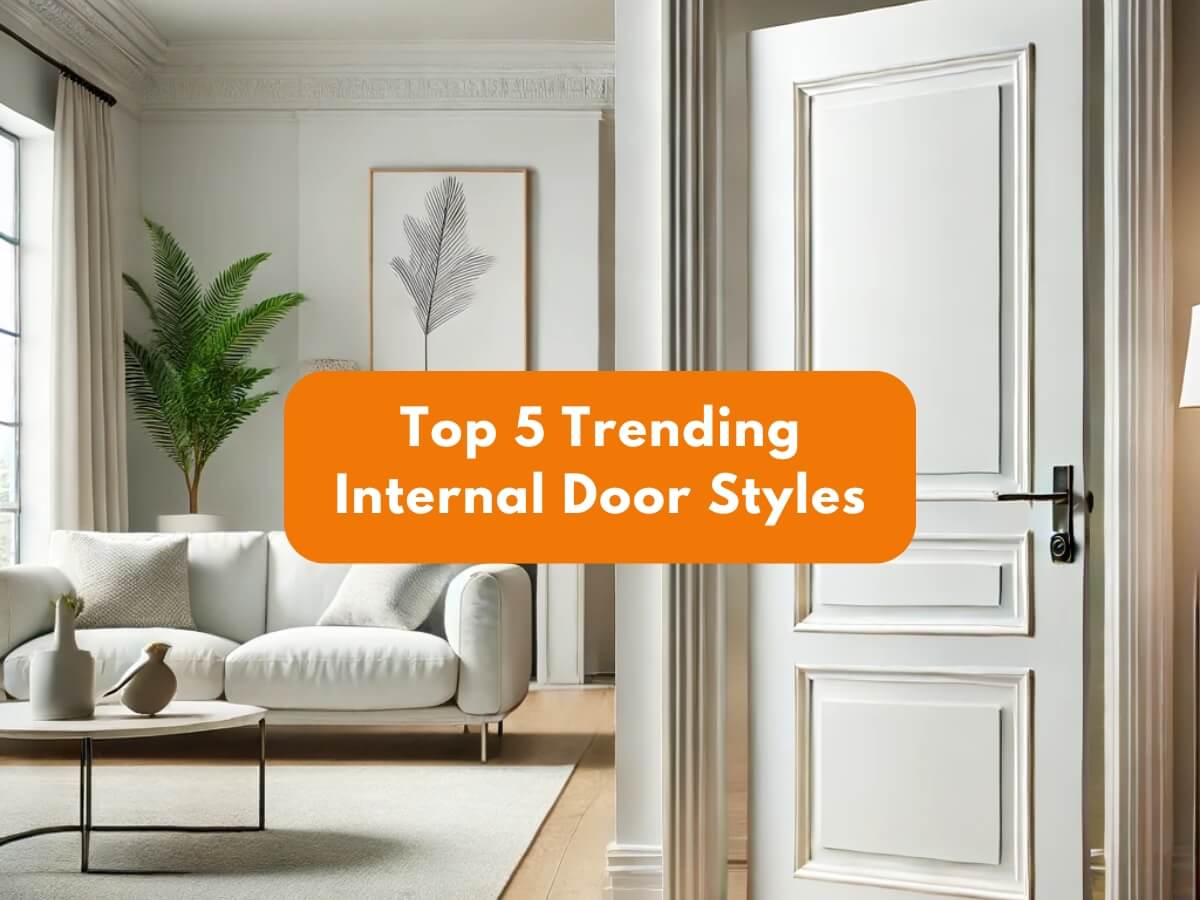
Internal doors have become more than just barriers between rooms—they are now central elements in interior design, energy efficiency, and smart home integration. In 2025, we're seeing a significant transformation in how internal doors are chosen, styled, and integrated into both new builds and renovations. From sleek minimalist styles to tech-infused solutions, internal doors are following the broader trends of sustainability, convenience, personalization, and design-led living. Let’s explore the top five trends defining internal doors in 2025.
1. Minimalist and Flush Door Designs
Seamless Integration with Modern Interiors
Minimalism continues to dominate architectural and interior styles. Internal doors are no longer meant to stand out with bulky trims or ornate details. Instead, flush doors—with hidden hinges and no visible frames—blend smoothly with walls, creating a continuous surface that enhances open-plan layouts and modern aesthetics. These doors provide a sleek, uninterrupted look that complements contemporary homes and minimalist office interiors alike.
Clean Lines and Hidden Mechanics
Homeowners and designers are gravitating toward doors with integrated mechanics—soft-close hinges, invisible pivots, and magnetic latches—all designed to remove visual clutter. This trend reflects a desire for spaces that feel calm, orderly, and intentional. While the doors appear simple on the surface, the craftsmanship and technical precision involved in creating them reflect a high level of innovation and sophistication.
Custom Finishes That Maintain Subtlety
Despite their understated appearance, flush and minimalist doors now offer customizable finishes—from matte lacquered colors to textured wood veneers. Many manufacturers provide bespoke color-matching options, allowing doors to perfectly blend into wall panels or contrast deliberately with selected hues. The trend reflects a balance of simplicity and individual expression.
2. Sustainable and Eco-Friendly Materials
Eco-Conscious Construction is a Priority
Sustainability is no longer a niche preference—it’s a mainstream demand. In 2025, internal doors made from eco-friendly materials like bamboo, FSC-certified timber, and reclaimed wood are becoming increasingly common. These choices reduce environmental impact and appeal to the growing market of eco-conscious consumers.
Low-VOC and Non-Toxic Finishes
Homeowners are more aware of what goes into their building materials. Low-VOC (volatile organic compound) paints and finishes are now standard for high-end and mid-range internal doors. These products release fewer harmful emissions, improving indoor air quality. Formaldehyde-free adhesives and water-based lacquers are also favored, supporting both health and environmental standards.
The Rise of Circular Design Principles
Leading door manufacturers are incorporating circular design into their processes. This means designing doors with recyclable cores, modular components that are easy to repair or replace, and even take-back programs for end-of-life products. In 2025, sustainable design isn’t just about the material—it’s about the full lifecycle of the product.
3. Smart and Automated Internal Doors
Tech Integration Enters the Interior
As smart home technology becomes more widespread, internal doors are joining the ecosystem. Doors can now be locked or unlocked via smartphone apps, respond to voice assistants like Alexa and Google Assistant, and even integrate with home security systems.
Touchless and Biometric Access
Touchless operation has become highly desirable, especially in post-pandemic living. Internal doors with motion sensors, facial recognition, or fingerprint scanning provide both convenience and hygiene. This technology is especially popular in high-end homes, shared spaces, and private areas like home offices or bedrooms.
Motorized and Remote-Controlled Doors
Automated internal sliding doors or pivot doors can now open and close at the touch of a button or scheduled via app. This offers both luxury and practicality—especially for people with mobility challenges. As home automation becomes more affordable, expect motorized doors to become more common in middle-market homes as well.
4. Bold Colors and Custom Finishes
Internal Doors as Design Features
While minimalist doors remain popular, many homeowners in 2025 are choosing bold, expressive designs that turn doors into focal points. Deep, saturated colors like forest green, navy blue, and matte black are trending. These bold doors add depth and character to otherwise neutral spaces.
Textured and Mixed Finishes
Textured finishes are making their way into internal door design, including fluted wood, leather-wrapped panels, or even concrete overlays. These options add tactile interest and contribute to the sensory experience of a room. Two-tone doors—where one side matches the wall and the other pops with color—are also gaining traction.
Artistic and Custom Graphics
Custom-printed doors are emerging in artistic homes and boutique commercial spaces. Whether it's abstract patterns, photographic prints, or hand-painted designs, doors are now being used as vertical canvases that reflect personal or brand identity. This trend shows how doors are shifting from being purely functional to fully decorative.
5. Glass and Mixed-Material Doors
Maximizing Light Flow and Space
In response to the desire for brighter interiors and multifunctional spaces, glass-panelled internal doors are on the rise. Clear, frosted, tinted, or fluted glass options provide varying degrees of transparency and privacy, making them suitable for living rooms, kitchens, and home offices.
Industrial and Contemporary Appeal
Framed glass doors—often with black aluminum or steel borders—are gaining popularity in urban and industrial-style homes. These doors echo loft aesthetics and work particularly well in open-concept layouts. They create boundaries without visually closing off a space.
Combining Wood, Metal, and Glass
Internal doors made with a combination of materials—such as wood and glass or metal and textured resin—are highly popular in 2025. These mixed-material doors are perfect for transitional interiors, where homeowners blend classic and modern styles. They're also favored in coworking spaces, luxury apartments, and high-end retail.
Conclusion
Internal doors are evolving in line with broader lifestyle and design trends. In 2025, homeowners and designers want doors that go beyond function. Whether it's sleek flush designs for minimalist aesthetics, sustainable materials for conscious living, or tech-infused systems for modern convenience, the new generation of internal doors reflects a deeper attention to detail and personalization. From bold visual statements to invisible smart features, the internal door is no longer an afterthought—it’s an integral part of how we live, feel, and move within our spaces.
Comments on “Top 5 Trends in Internal Doors for 2025”